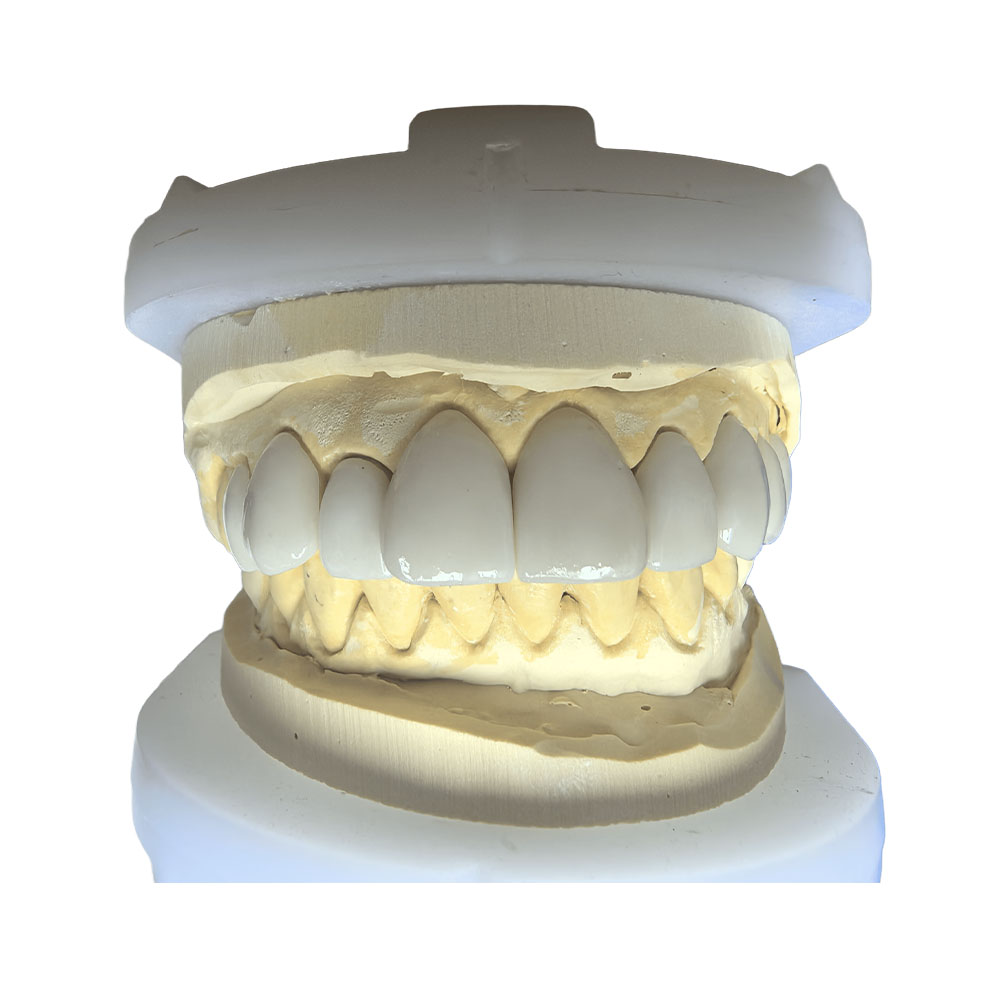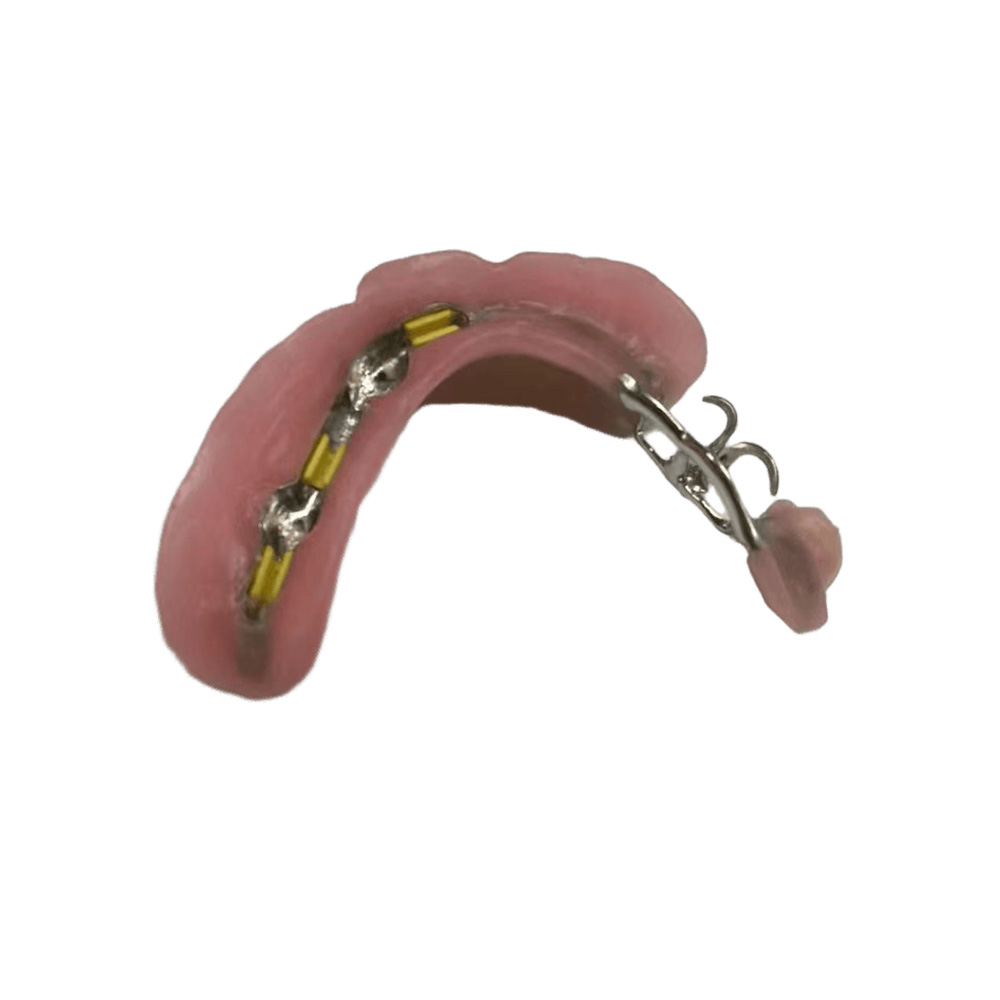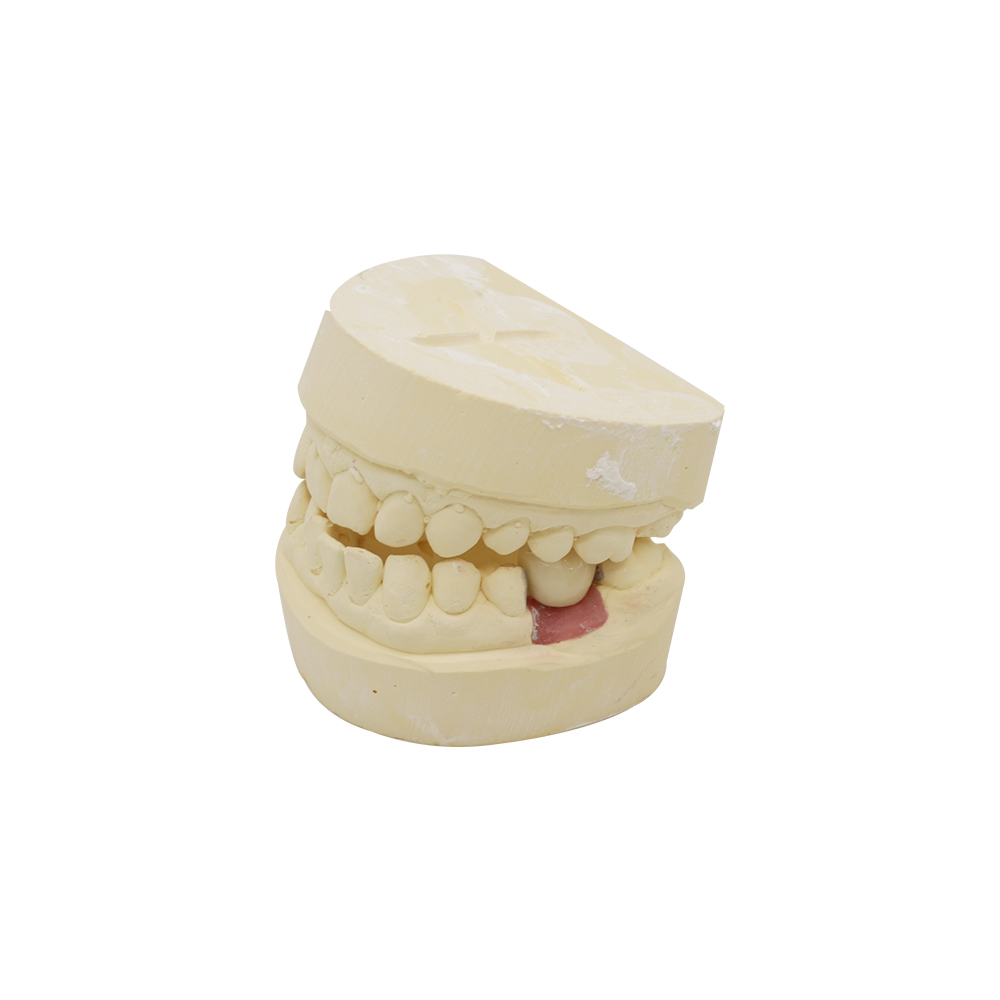
Skræddersyet søvnapnø-mundskinne
🕢 [ Udfyld formularen, så svarer vi inden for 30 minutter! ].
Custom Sleep Apnea Mouth Guard Manufacturer
Unlike store-bought (OTC) devices, our custom OAs are carefully made for each person. We use exact molds of their teeth, advanced 3D scans, or digital models of the unique shape of their mouth. This offers a gentle, patient-focused way to treat obstructive sleep apnea (OSA). This custom-made process is usually done by expert dental labs, like Istar Dental Lab, or other special makers.
Why Choose Our Custom Sleep Apnea Mouth Guard Instead of OTC Ones?
There’s a big difference between custom OAs and their store-bought (OTC) counterparts, which is important for dentists and their patients to know:
- Design and Making: Custom OAs are made for one person at a time, often using modern digital tools (like CAD/CAM og 3D-printning) to make sure it fits perfectly. On the other hand, OTC devices are made in large numbers, using standard “boil-and-bite” or one-size-fits-all designs.
- Fit and Comfort: The custom-making process leads to a much better fit, stays in place well, and is more comfortable for the patient. This directly leads to patients using them more often and for a longer time. OTC devices often don’t stay in place, which can cause soreness in the mouth, tooth movement, jaw joint (TMJ) pain, and many people stop using them.
- How Well It Works: Careful medical studies and reviews of many studies, including the AASM 2015 guidelines and one by Phillips and others (2013), regularly show that custom OAs are much better at lowering the Apnea-Hypopnea Index (AHI), getting more oxygen to the body, and easing the signs of OSA. OTC devices often can’t move the jaw forward enough to help or keep the airway open consistently.
- Government Rules: Custom OAs are considered Class II medical devices by the U.S. FDA. This means they need a 510(k) clearance, medical data, and follow-up checks after being sold. OTC devices often get around these strict government checks by calling themselves “snoring aids,” and they often don’t have good data on how well they work or if they are safe. They are usually not FDA-cleared for treating OSA.
- Professional Help: Custom OAs must be prescribed, fitted, and checked over time by a trained dental sleep medicine expert or doctor. This professional help makes sure the right patients are chosen, the device is adjusted correctly, and any possible side effects are watched. OTC devices are sold right to customers, which raises the risk of wrong self-diagnosis, incorrect use, and overlooking other health problems.
- Medical Advice: Expert groups like the American Academy of Sleep Medicine (AASM) og den American Academy of Dental Sleep Medicine (AADSM) clearly recommend custom, adjustable oral appliances fitted by trained professionals for OSA treatment. They warn against using OTC devices because there isn’t enough proof they work and there are safety worries (AASM Clinical Practice Guideline, 2015; AADSM Policy Statement, 2023).
- Cost and Insurance: While custom OAs cost more upfront (usually $1,500–$3,000 USD), they are often paid for by medical insurance or Medicare when prescribed for OSA. OTC devices are cheaper ($30–$150 USD) but are not covered by insurance. Their lower price isn’t worth it because they don’t work well and have a higher chance of causing problems.
For Istar Dental Lab, our skill in making things with high precision leads to better results for patients and helps our dental partners offer treatments that are proven to work and can be covered by insurance.
New Designs and Technology for Our Custom Mouth Guard for Sleep Apnea
The world of custom OAs is quickly changing, thanks to new developments in digital dentistry and materials:
- AI-Powered Design: Virksomheder som SomnoMed og ProSomnus are making design tools that use AI with 3D pictures and smart computer programs. These tools customize MADs based on a person’s airway shape and how they think the mouth tissues will respond, to make the fit and results as good as possible.
- Built-in Sensors and Live Monitoring: New test models (like from ResMed, 2024) have small sensors built in to watch the jaw position and airflow in real time. This lets the device adjust itself during sleep, which is a step toward “smart” oral appliances.
- Computer Models for Each Patient: AI-based computer tools (like from SleepAI, 2024) combine data from head scans (CT/MRI), dental scans, and sleep camera tests to guess how a person will react to MADs. This lets them test the device on a computer first, making it more accurate.
- Hybrid and Next-Gen Devices: Hybrid devices that move the jaw forward and also hold the tongue in place (like Oventus O2Vent Optima, 2023) are being studied. They aim to work together to fix blockage behind the palate and the tongue. Early tests show they might have extra benefits for keeping the airway open and lowering the AHI.
- Multi-Material Printing: Advanced 3D printing methods like multi-material SLA og PolyJet printing (Stratasys J5 DentaJet, 2024) allow for making parts with different levels of hardness. This means you can have hard biting surfaces for durability with soft, flexible edges for better comfort and to help it stay in place. Tests show this can lower patient-reported mouth soreness by up to 40% compared to single-material designs.
- Self-Adjusting and Shape-Memory Materials: Researchers at MIT (2024) are testing 3D-printed OAs that use shape-memory materials. These materials can be reshaped with heat right in the dentist’s office for small fit adjustments. This could mean fewer remakes and a better fit over time as the mouth changes.
For Istar Dental Lab, these new ideas show that there is a growing need for advanced making skills. Our use of modern CAD/CAM og 3D-printning allows us to make these new kinds of devices. We can offer our dental partners top-of-the-line solutions that improve patient results and help them offer more services to their patients.
Materials and Advanced Making Processes
How well a custom oral appliance works, how comfortable it is, and how long it lasts really depends on the materials used and how carefully it’s made. Istar Dental Lab, as a top dental laboratory, is a leader in using the latest materials and making processes.
Safe Materials for the Body
Choosing the right materials for custom OAs is very important. They need to be safe for the body, strong, long-lasting, and easy to make.
- New Safe Resins for SLA/DLP: With new technology like stereolithography (SLA) and digital light processing (DLP) 3D printing, there are new types of Class IIa resins that are safe for the body. Companies like Formlabs (Dental LT Clear V2, 2023) and NextDent (Ortho Rigid, 2024) have made resins specially for use inside the mouth. These materials are stronger, less likely to break, and have much less of the leftover chemical that can cause allergies.
- TPU and PEEK in FDM/FFF: Research from the University of Leuven (2023) shows the benefits of using medical-grade TPU og PEEK plastics for Fused Deposition Modeling (FDM) printing. TPU is very flexible, which makes the device more comfortable. PEEK is very durable, holds up well against moisture over time, and hardly absorbs any water, making it great for long-lasting parts.
- Bio-based and Eco-Friendly Polymers: A new trend is the use of eco-friendly materials. Startups like GreenPolymer (Germany, 2024) are selling polyesters made from plant-based sources for DLP printing. They are as strong as older plastics like PMMA but are better for the environment and can be composted professionally.
- Less Allergy Risk: Recent studies from the University of Tokyo (2023–2024) that follow safety standards show that new resins without methacrylate don’t harm living cells and don’t release any chemicals into artificial saliva after 6 months. This is better than older materials like PMMA og Bis-GMA.
- Long-Term Strength: A 2024 study (Mayo Clinic) on 3D-printed appliances found they were still very strong after 18 months of use in a simulated mouth environment. They showed no major breakdown or germ buildup, which means they should perform well for a long time.
Advanced Making Processes
The move from old-fashioned hand-making methods to digital tools has changed how OAs are made, allowing for amazing accuracy and a personal fit.
- CAD/CAM and 3D Printing: Computer-Aided Design (CAD) and Computer-Aided Manufacturing (CAM), especially 3D printing, are now the standard way to make custom OAs. The process includes:
- Digital Molds: Scanners inside the mouth take very accurate 3D pictures of the patient’s teeth and mouth.
- CAD Design: Special software is used to design the OA on a computer, giving precise control over fit, how it stays in, and how far the jaw is moved.
- 3D-printning: The digital design is sent to a 3D printer (SLA, DLP, FDM) that builds the device layer by layer using safe resins or plastics.
- Multi-Material Printing: As we said before, multi-material printing (like with Stratasys J5 DentaJet, 2024) lets us make OAs with different material types in one device. This allows for hard biting surfaces for strength and a good fit, along with flexible parts for more comfort and less mouth soreness.
- Smart Materials and Built-in Sensors: Research groups in South Korea (2024) have made test models of 3D-printed OAs with tiny sensors built in to track jaw movement and patient use in real time. Wireless data chips can be added during the printing process.
- Environmental Benefits: Studies from ETH Zurich (2024) show that DLP/SLA processes that use new low-energy materials and recyclable resin containers use 35% less energy and create 50% less harmful waste compared to older manufacturing methods.
For Istar Dental Lab, our skill in these advanced making methods and our use of the latest safe materials are our main strengths. We can offer our dental partners not just top quality and accuracy, but also new solutions using the latest in material and digital technology, including the possibility of smart devices with sensors. This helps us meet the changing needs of the dental sleep medicine field and support our partners in giving the best care to their patients.
Brugsscenarier
- Main treatment for mild or moderate obstructive sleep apnea
- An alternative for people who can’t use CPAP maskiner
- A simple, low-cost option for loud snorers
- A combined treatment with CPAP for more serious cases
- Better sleep for busy people who travel a lot
Main Benefits
- Custom Fit Every custom mouth guard for sleep apnea is made just for your patient’s mouth. That means less pain and better results.
- Komfort Our custom snore guard feels soft and easy. It is small and smooth, so patients forget it’s there.
- Let at bruge Put the guard in before bed and take it out in the morning. No tubes, no machines, no noise.
- Quiet No loud humming at night like CPAP machines. Both patient and partner sleep better.
- Bærbar Great for travel or home. Fits in a small case for easy carrying.
Simple Steps to Order
- Take a dental impression or a digital scan of the patient’s mouth.
- Send it to our lab.
- Vi bruger CAD/CAM eller 3D-printning for a custom fit.
- The guard is delivered to your clinic or lab.
- Your patient tries it on, and you make any small adjustments.
Cleaning and Care
- Rinse with clean water after use
- Brush with a soft toothbrush and mild soap
- Store in a dry case
- Bring to the dentist for checks
Product Specifications Table
| Parameter | Detaljer |
| Materiale | Hard acrylic, soft/hard laminate, thermoplastic, medical nylon, titanium |
| Design | One-piece, two-piece, adjustable |
| Tilpasning | Made from exact dental molds, digital scans, or physical models |
| Teknologi | CAD/CAM, 3D-printning, traditional lab methods |
| Justerbarhed | Up to 1 mm changes for jaw movement |
| Certificering | FDA-approved, Class II medical device, 510(k) clearance |
| Reimbursement | Can be covered by Medicare (code E0486 if rules are met) |
| Vedligeholdelse | Simple cleaning, easy adjustment, repair options |
| Holdbarhed | Made for daily use and to last a long time |
| Garanti | Manufacturer’s warranty offered |
| Pasform til patienten | Secure, personal, very comfortable |
| Forsikring | Help with medical billing and insurance payment |
Trust Our Service and Get Started Today
We help clinics and labs save time and give each patient a better night’s sleep. Choose our custom mouth guard for sleep apnea to help more people. We are trusted by many dental sleep medicine professionals.
Help your patients rest easy. Order a custom sleep apnea mouth guard for your clinic or dental lab. Find out more about our fast, easy service. Ask us for samples, warranty, and insurance support.
Better tools for better sleep, made for every smile. If you work in a dental clinic, hospital, or lab, we are ready to help you provide top care with a custom mouth guard for sleep apnea and custom snore guard made just for your needs.









